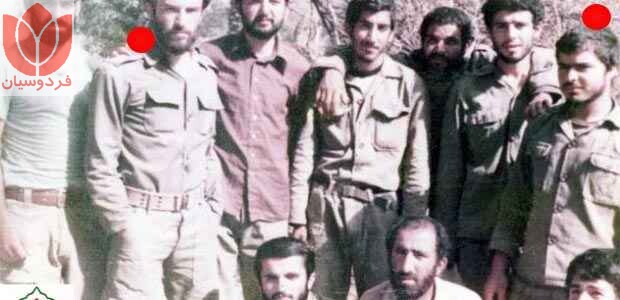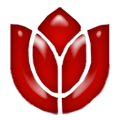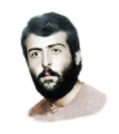Date of birth: November 3, 1953
Place of birth: Ferdows
Date of martyrdom: January 7, 1981
Place of martyrdom: Hoveyzeh
Type of testimony: Incidents related to the imposed war
Martyr Farrokh Salahshour student was born on November 3, 1943 in Ferdows city of South Khorasan province. At the age of 5 months, he left for Fasa with his family due to his father’s job as a gendarmerie doctor.
The only student martyr of Fars province, Martyr Salahshour, was immortalized with an honorable presence in the battle of Tan with Hoveyzeh tank. Three years later, in March 1983, after clearing the mines in the Hoveyzeh plain, the martyrs Seyyed Hossein Alam al-Huda, Farrokh Salahshour, Mohsen Ghadirian and two overturned tulips, whose bodies are and whose names are not, appeared 600 meters south of the Hoveyzeh Martyrs’ Tomb.
And now, Martyr Farrokh Salahshour is the only symbol of the homelessness of the student martyrs of Fars province and Baharestan Hezar Alaleh Fasa in this lasting and proud epic, is a golden leaf on the dark past of the great losses of the people of this land.
Hadi Ferdowsi is known to poetry lovers because of his creative and different quatrains; A young poet who was born in the village of “Kate Gonbad” in Sarvestan city. Who recited poetry in the presence of the Supreme Leader, and after that he was so excited that he said: “Persia is showing itself.” You must know that the Supreme Leader does not say such a thing in describing everyone, but the richness and strength of Hadi Ferdowsi’s poetry has found such a level of understanding and art.
Ferdowsi composed this quatrain for the warrior martyr:
The eyes of the desert are flooded with rain. January is
the time of spring because it has become spring .
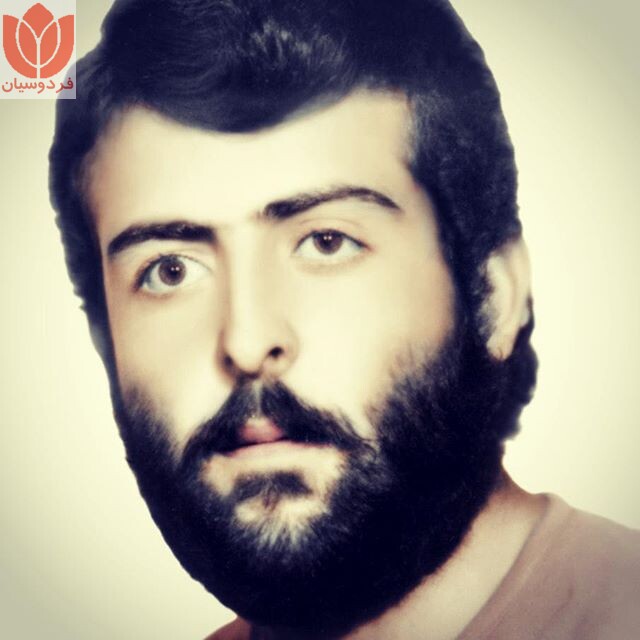
Funeral of the warrior in the year 62- Ahvaz
The following text tells the story of one of the members of the Hoveyzeh investigation group and the moment when Martyr Alam al-Huda and Martyr Salhshour were found:
The driver plunged the loader to the shovel on the ground. On the day of the operation, Hussein was the only guard wearing a uniform. My heart was coming out of my mouth. I was relieved that at least a body of Hussein remained! I told the driver: Go back.
I pushed the soil aside with my hand. The soil around the martyr’s waist was identified. To my surprise, I saw that the eternal Qur’an that was with Seyyed Hussein is under the ground. Quran signed by Imam Khomeini and Ayatollah Khamenei. Hussein still had a small photo of the Imam and the IRGC logo on his chest.
I pushed the soil aside. But I saw, unlike other corpses, that their bones were healthy. Hussein’s skull is crushed !! All the tension bones were shattered !! When I saw this scene, I unknowingly remembered the scene of Karbala and the horses that had trampled on the bodies of the martyrs !!
To my surprise, I saw RPG Hussein crushed under his body! It was there that I realized that the news I had heard from Hoveyzeh was true! It turned out that the tanks had passed over Alam al-Huda’s body with their sand and crushed his bones! I could not stop crying, I wanted to shout the oppression of these martyrs with every cell of my body. I sat on top of Hussein’s broken bones for a few hours and felt pain and heartache. Hussein did not fit in this world. It was a pity to go to natural death, he should have been martyred!
A little further on, I found the body of Ghaffar Dervishi. A little further on, I found a body with a piece of paper with it, it turned out that Farrokh was a warrior. I did not know him, he was one of those who came to the area a few days before the operation. On the other side, the body of a brother named Ghadiran was found, who was one of the children of Ahvaz, and finally I found the body of Saeed Jalali. Who was one of the children of Jazayeri Mosque in Ahvaz.
In the evening, I remembered my mother, Hussein, who was asking me for an answer. It was very difficult for me to tell Hussein about the broken bones.
I went to Ahvaz. I knocked on the door of the house of Martyr Alam al-Huda. Haj Khanum opened the door in front of us. I could not speak. I just took out the Quran under Seyyed Hussein’s orthodoxy and showed it to his mother. He realized that Hussein had been martyred, they knew that wherever the Qur’an was, Sayyid Hussein was there.
Alam al-Huda’s mother came and sat next to me and said:
I knew that Hussein had been martyred, but I was told that he had been captured. Hussein was not one to allow himself to be captured alive by the enemy.
Quoted from dana.ir site
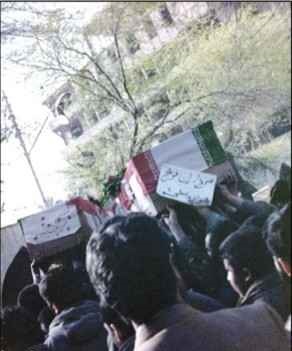
Martyr Yad Salahshour from his sister’s language (Source: International Quran News Agency)
Martyr Farrokh Salahshour ‘s sister said about her martyr brother: He was born in Ferdows, Mashhad, which is now South Khorasan. Our father was an army doctor and he always traveled because of his job. On one of the missions, my father was transferred to Fasa, Shiraz, and then to Ferdows, Mashhad. The warrior martyr is born there. After a while, we moved again to Fasa, Shiraz, which is our motherland.
Shahid Salahshour completed his primary and secondary education in Fasa. He spent his military service in one of the remote villages of Kerman and taught for days to the students there. He was interested in this work. After military service in 1954, he was accepted to the University of Tehran in the field of business management. After registering, he realized that his employment commitment was questionable, he did not like it and resigned. Shahid will participate in the entrance exam for the second time and will be accepted in the field of chemistry of Razi University of Kermanshah.
Activities of the warrior martyr before the revolution
There, with two or three of his friends, he tries to attract young people due to the activities of Komala groups. At that time, they rented a big house in Kermanshah and gathered about forty students around them; In this house, prayers are offered in congregation in three meals, and each time one of the students leads the prayer. Some students said we could not go to prayer. They were told: “If you do not commit a major sin within a week, you can be a vanguard.” This made the students self-made. Of course, they also worked on them politically, and this movement continued every semester with new students.
Martyr Salahshour and his friends, in addition to their education, trained so that they could raise money and provide rent, food, and food for the students so that these self-made students could enter the community and be joined by another group of students. After three or four semesters, SAVAK realizes this move; He closes the house and Shahid Salahshour and two of his friends are expelled from the university.
The martyr returns to Fasa. The victory of the revolution was near. The martyr was very active in photography and his photographs of the marches are still available. After the victory of the revolution, he returned to the university and continued his education. At that time, Shahid Beheshti wrote a letter to the whole country to introduce two militant and elite students from each university. During that period, Shahid Salahshour and Dr. Samimi, who is now a professor at Shiraz University, are introduced. These students go to Tehran and sit at the feet of great people like Shahid Beheshti and و and become self-made. These meetings were held in Tehran in the summer until the issue of capturing the spy nest arose. Martyr Fazel, Martyr Hatami and Martyr Salhshour, who are martyrs of Hoveyzeh, are present in that incident.
Friends of Martyr Salahshour say that he was present in the spy nest but did not introduce himself and was there like other students. The martyr’s friends later explained that when he was martyred, we knew that he was one of the students capturing the spy nest. He did not stop there, and in those days he came out of the spy nest and identified houses that might still belong to American groups.
My older sister, who lived in Tehran, explained that the martyr had a book in her hand, which she had covered with a newspaper, and it was not clear what the book was. The morning was coming and the night was coming. I said to him: Mr. Farrokh, where are you going? Aren’t you with the kids who have taken over the spy nest? “Where are we, where are they?” I asked him if what the children did was approved by the Imam? He said: The children who did this informed Seyyed Ahmad Agha and he also told the Imam. The Imam also said: Now that they have taken it, stick it firmly. Elsewhere, Shahid Beheshti confirms them. Because there were so many words and hadiths at that time that students were asked why did you do this? Why did you do that, but they did not listen to anyone?

After capturing the nest and handing over the prisoners, Martyr Salahshour returned to the university. In 1359, Saddam attacked and then one of the schools in the west of Kermanshah was bombed. The warrior martyr sees with his own eyes how the students were martyred. The martyr could not bear to stay there and with a group of students, due to their insight, they did not wait for the Imam’s order, they came to Khorramabad and saw a guerrilla course there. After that, the warrior martyr is introduced to the 92nd Armored Division.
Martyr Salahshour enters Susangard with the 92nd Armored Division. There were harassment operations there. Martyr Alam al-Huda was the commander of the Hoveyzeh Corps at that time. Nasrullah Mahmoudzadeh, who is one of the friends of Martyr Salahshour, says: “These children rented a van and reached Hoveyzeh, where they joined Martyr Alam al-Huda.” The warrior martyr was in charge of a group of thirty or forty men who were advancing towards the enemy. These groups attacked from several directions. At that time, Bani Sadr was the commander-in-chief of the forces. The commanders at the time plotted Operation Nasr; Operation Nasr is the first and last operation performed during the day. The Iraqis expected the night of the attack.
Operation Nasr is carried out from three axes and the children are moving forward, 800 captives and a thousand killed as a result of this operation. The message reaches the Imam and the Imam sends a congratulatory message. The children are reclaiming and advancing 20 kilometers from the lands occupied by Iraq. The plan was for the army and the corps to advance as far as Karbala; They were also empty-handed; These were a few groups of RPGs and the rest had light weapons. The only person who came across this group on the evening of January 6 was Ayatollah Khamenei, who was asked what he was doing here. They answer, “We will go forward to conquer Karbala, God willing.” They ask where is your weapon? They say: Our weapon is God Almighty. This. These kids hit the enemy with 5 or 6 RPGs.
On the 16th of January, they see that they are surrounded from the earth and the sky; At first, they think that these tanks are insiders, but then they realize that they are under siege by the enemy and have come to take revenge on them on January 6th. The children who did not go forward will go back. Unfortunately, Bani Sadr does not supply any ammunition or weapons to the Basijis.
Why are the martyrs of Hoveyzeh called the martyrs of Karbala Hoveyzeh?
Martyr Alam al-Huda ordered those with heavy weapons to come forward and the rest to retreat as they could. They go forward until 4 o’clock in the afternoon. The same martyrs of Karbala fought to the last drop of their blood. The warrior martyr was an RPG, he moves forward and with the bullets of the enemy, everyone falls to the ground. Some are captured. At that moment, the ruthless commander of the enemy ordered them to move on their bodies with sand tanks, whether alive or wounded, so that there would be no trace of them. These children were also under the tanks of the enemy, like the martyrs of Karbala, whose bodies were poisoned by horses. That is why we call these martyrs the martyrs of Karbala Hoveyzeh. The enemy then attacked Hoveyzeh and razed it to the ground.
The children’s bodies were there for three years and a month, and we were not able to return them. 26 Bahman Three years later, the mother of martyr Alam al-Huda tells Sardar Younes Sharifi, one of the martyrs’ survivors, “If you can not find our children, we will go and investigate our mothers.” The message of the mother of martyr Alam al-Huda reached the ears of Imam Khomeini. After three years and a month, a group goes to investigate; The first martyr to be found was Martyr Mokhtari. Because the body of the martyr was under the sand; There was no damage under the enemy tanks and the name of Martyr Mokhtari was written on the sole of the shoe.
Then Martyr Qudussi was investigated. The identification of Martyr Qudussi was also through a mission sheet that their noble father wrote to the airline and introduced him to give him a ticket. Sardar Sharifi said: As we were investigating, an RPG appeared. Six martyrs can be found there, the first of whom is the martyr Alam al-Huda, who is known by his RPG and pocket Qur’an. The two martyrs were unknown. After that, Martyr Salahshour, Martyr Dehshour and Martyr Mohsen Ghadirian were also examined there.
How was the warrior martyr identified?
The 92nd Armored Division had given a mission card to the warrior martyr stating that he had seen a guerrilla period. The martyr kept the sheet in his pants pocket along with his will and several other items in a plastic bag that he had glued to it. Sardar Sharifi says: At that time, we did not know where the warrior martyr was from and we did not know how to introduce him to their family. At that moment, an army jeep came and said: This is a martyr from Fasa. This army jeep was no longer seen. Then they called the families and told them the news.
Our father did not believe until the last moment that Farrokh had been martyred until he dreamed of a martyr in his dream world and said that my will was in the hands of the IRGC. The martyr was very lovable. He was very respectful of his parents. Because his father was an army doctor, the martyr paid his respects when he came on leave in military uniform and his father greeted him.
The intersection of reason and love
After identifying us and especially my mother, we were at a crossroads where to bury the martyr. Martyr is the youngest son of the family; We were very interested in him. It was a crossroads of reason and love. Martyr Alam al-Huda’s mother came and told our mother: These children moved together, fought with each other and were martyred together. They are still found in groups, I do not think the martyr would like them to be separated. Despite her strong interest in Farrokh, her mother agreed to bury her in Hoveyzeh. Mother complained from a distance. The mother of martyr Alam al-Huda said: We are the mother of all martyrs, if you can not, we will visit the martyrs. Your martyr is not alone here. Farrokh loved his mother very much; He helped his mother a lot. When he served behind the front lines; On Thursdays he called and cheered; His mother used to say to him: Do not go to the front. He would say: Where are we, where is the front? I take photos and videos here and my mother is breathing easily. We did not know that Farrokh was on the front until the news of the children’s martyrdom was brought. Because he did not want his mother to worry. But the mother raised her hand at the funeral and said: God, accept this sacrifice from me. Mother’s perseverance was great and then they made a will: after death, I want to be with Farrokh. He died in November 1995 and was buried there.
When the body of the martyr had not yet been found, the mother wondered why our martyr could not be found. In that year, the mother miraculously visited Mecca. There was always a three-by-four photo of Farrokh in his mother’s bag. The mother puts the photo in the shrine of the Messenger of God (PBUH), who had a shrine at that time, and there she asked the Messenger of God (PBUH) to return my son to me. My mother used to say: When I threw the photo in the shrine, my heart calmed down. It did not take long, that same year they wrote in the newspaper Al-Inta’a that six martyrs were found, one of whom was named Salahshour. My brother wanted to be anonymous, but because his mother had asked the Messenger of God (PBUH) to return her martyr to my mother, she was identified.
In the end, the sister of Martyr Salahshour referred to the hospitality of the Khuzestanis and said: I thank Khuzestan province and Jihad Sazandegi for their hospitality, which plays the leading role in the country.
